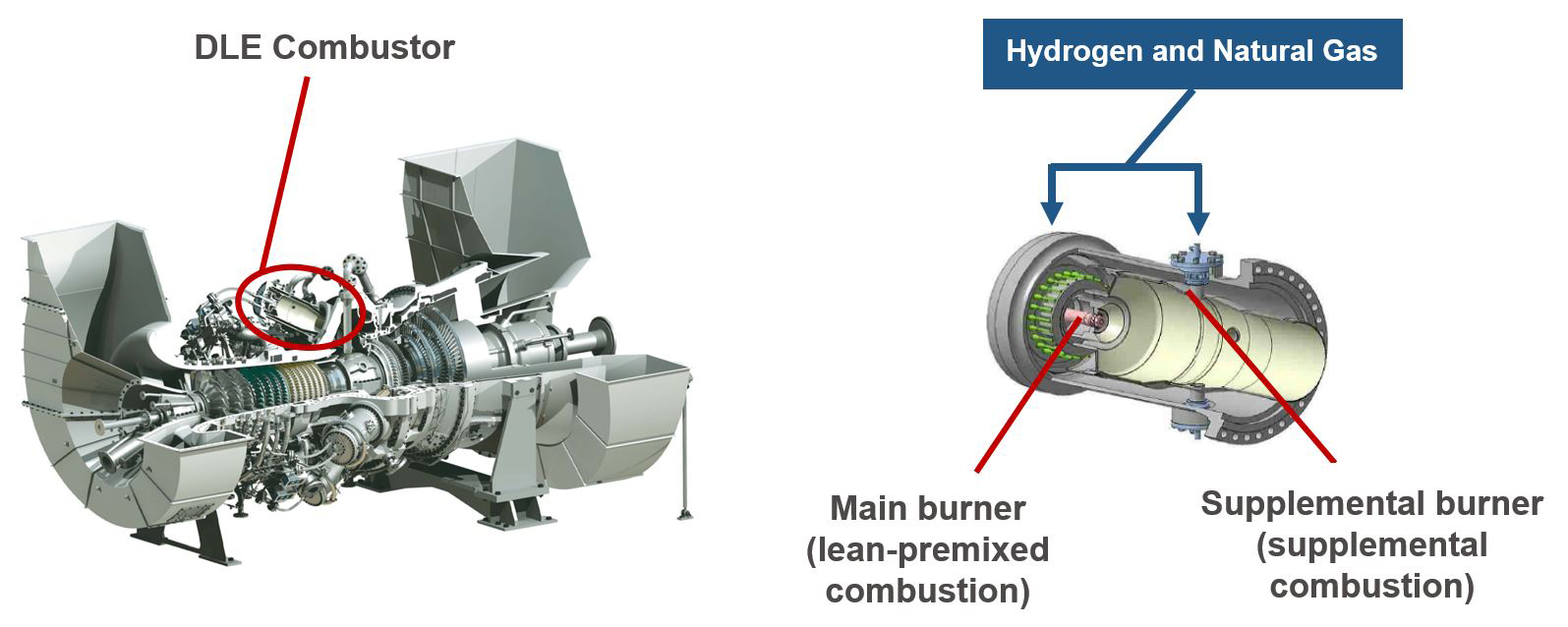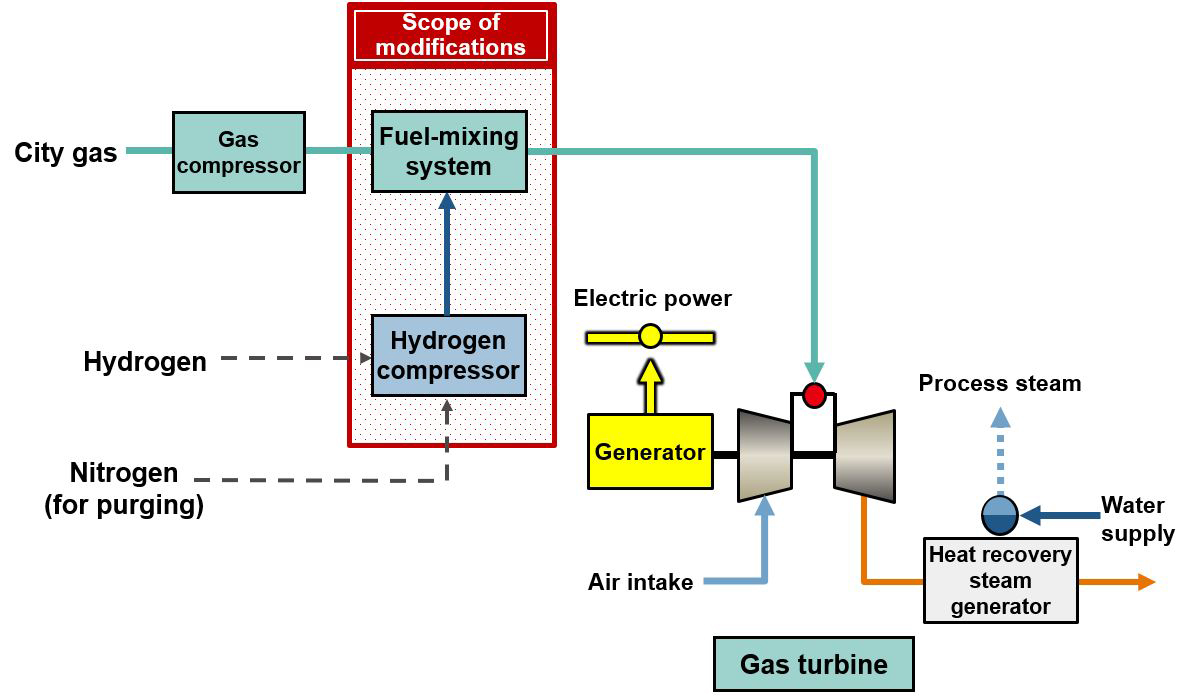Kawasaki Commences Sales of Thirty-percent-hydrogen Mixed-fuel DLE Combustor for 30 MW Class Gas Turbines
Aug. 02, 2022

Tokyo, August 2, 2022 — Kawasaki Heavy Industries, Ltd. announced today its commencement of sales of a DLE*1 combustor designed for use in the 30 MW class L30A gas turbines capable of achieving stable, low-NOx*2 mixed-fuel combustion using up to 30 percent hydrogen. This is the company’s third DLE combustor market release, following previous releases for its 8 MW class M7A-03D and 1.8 MW class M1A-17D gas turbines.
Kawasaki utilizes an original and unique combination of lean-premixed combustion*3 and supplemental combustion.*4 In the lean-premixed combustion, fuel is mixed with air prior to combustion in order to eliminate localized high-temperature spots where the most of the NOx emissions are produced. Supplemental combustion injects fuel after lean-premixed combustion, and increases power output with no increase of NOx emissions stably. By applying this proprietary combustion technologies to hydrogen-mixed fuel combustion, Kawasaki has realized a stable combustion while maintaining low NOx emissions on a par with those of natural gas combustion.
The DLE combustor can be installed without any need for modifications to the gas turbine itself, meaning only the addition of equipment such as a hydrogen compressor and fuel-mixing system is necessary, with no need for replacement of current system components. This makes it possible to continue using existing engines that have proven their reliability through real-life operations while also harnessing the power of hydrogen energy.
With an eye to the popularization of hydrogen energy, which will play a vital role in the future achievement of a zero-carbon-emission society, Kawasaki is developing a range of different products that serve variously in the production, transportation, storage, and utilization scenes of the hydrogen supply chain. Among these, hydrogen gas turbines are vital utilization products that will significantly contribute to eliminating carbon emissions in Japan’s power generation industry, which accounts for roughly 40 percent of the nation’s CO2 emissions. Moving forward, Kawasaki will continue to develop gas turbine combustion technologies that enable the utilization of hydrogen,*5 *6 working as one for the good of the planet.

| *1 | Dry Low Emission. A method of mitigating NOx emission volumes by keeping combustion temperatures low without relying on water and steam injection. |
| *2 | Nitrogen oxides. A category of oxides formed through the joining of nitrogen and oxygen in the air as a result of high-temperature combustion. NOx are causal factors in photochemical smog and acid rain. Emission amounts for NOx are limited by the Air Pollution Control Act and local-government ordinances. |
| *3 | A method of combustion in which fuel is evenly mixed with air prior to combustion and the lean mixture is injected into the combustor. This method greatly reduces NOx emissions by achieving a uniform temperature distribution without local high-temperature spots. |
| *4 | A method of combustion in which fuel is injected downstream of lean pre-mixed combustion. This method can be used to change output levels while maintaining stable lean pre-mixed combustion by adjusting supplemental fuel, and enables NOx emissions to be kept low. |
| *5 | Kawasaki Develops Forty-percent-hydrogen Mixed-fuel Technology in Gas Turbine DLE Combustors https://global.kawasaki.com/en/corp/newsroom/news/detail/?f=20211207_2949 |
| *6 | For more information, refer to Kawasaki’s hydrogen gas turbine development roadmap: |
Contact
If you need more information about our business,
please feel free to contact us.





